Introducing an interview with artist Younho Kim, part of the program at Kiosk Training Center, planned as part of the Kiosk Training Center program from May 18th.
Primarily dealing with sculpture, installation, and drawing, I seek to experiment with suitable media and expressions as needed.
'Boundaries and freedom,' reflection on a light life due to this, and 'relationships and creation' are my main interests.
-Artist's words
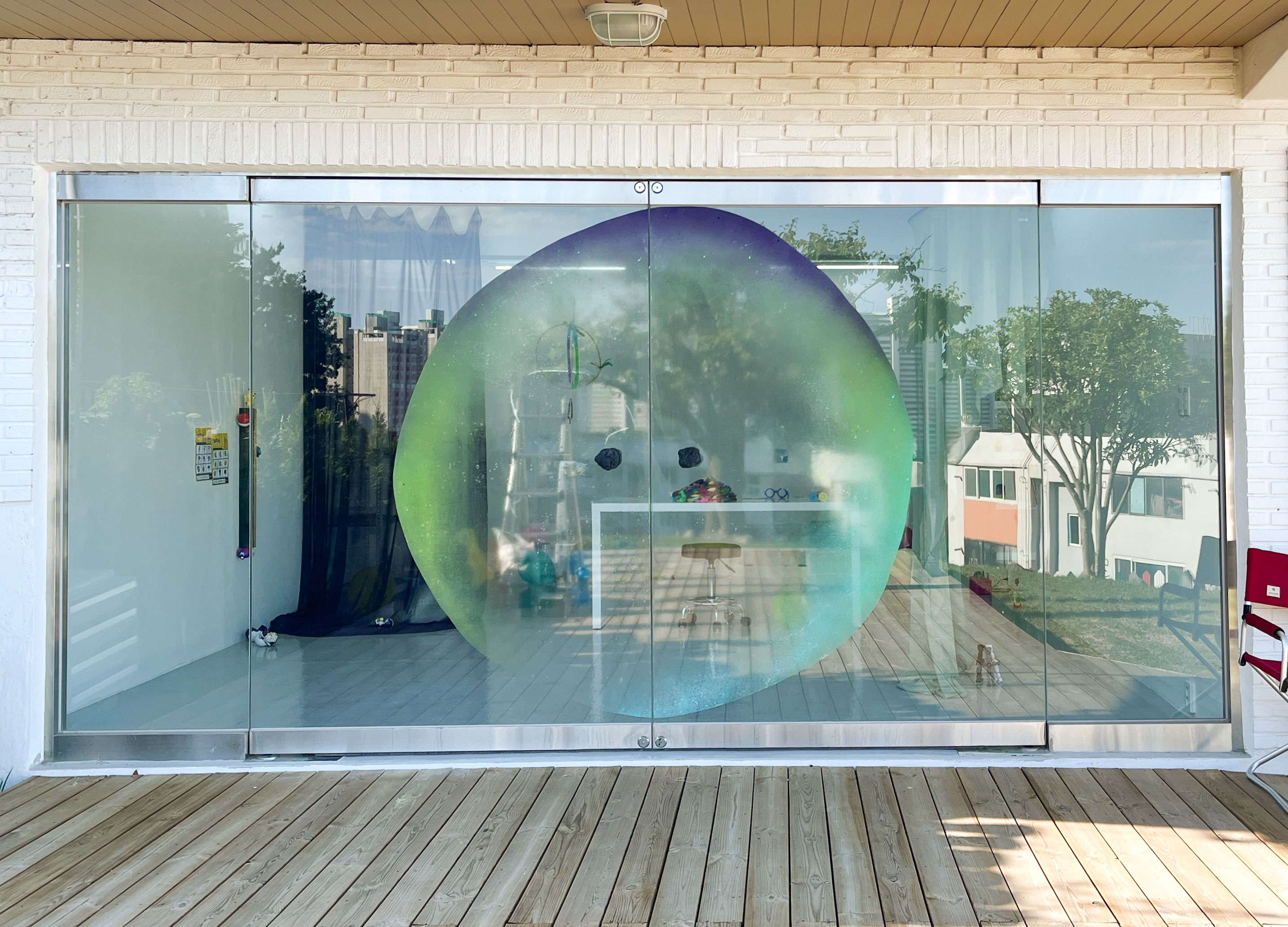
S/F:
The title of the exhibition, 'Bbung-iyo~', brings back memories for me who spent the childhood in the 90s. It reminds me of the puffing grain man and also invokes a sense of nostalgia of dad jokes. The title also seems to carry a sense of sadness, as if something is about to burst, leaving behind emptiness but also transforming into something else through its explosion. How did the title ‘Bbung-iyo~' come about through your creative process?
YH: This exhibition is an approach to 'self.' In the realms of religion and academia, there has been a process of the deconstructing the self and going beyond it, however, in our daily lives, we still experience excessive attachment to the self and the boundaries it creates. It even seems to become more pronounced over time. That's why the concept of 'lie,' which can encapsulate ambiguity such as fiction and the sound of that fiction bursting, came to mind unexpectedly.
Like you mentioned the puffing grain man in the question, as I grow older, I find joy in experiencing the rare reminder of childhood memories or experiences, regional dialects.
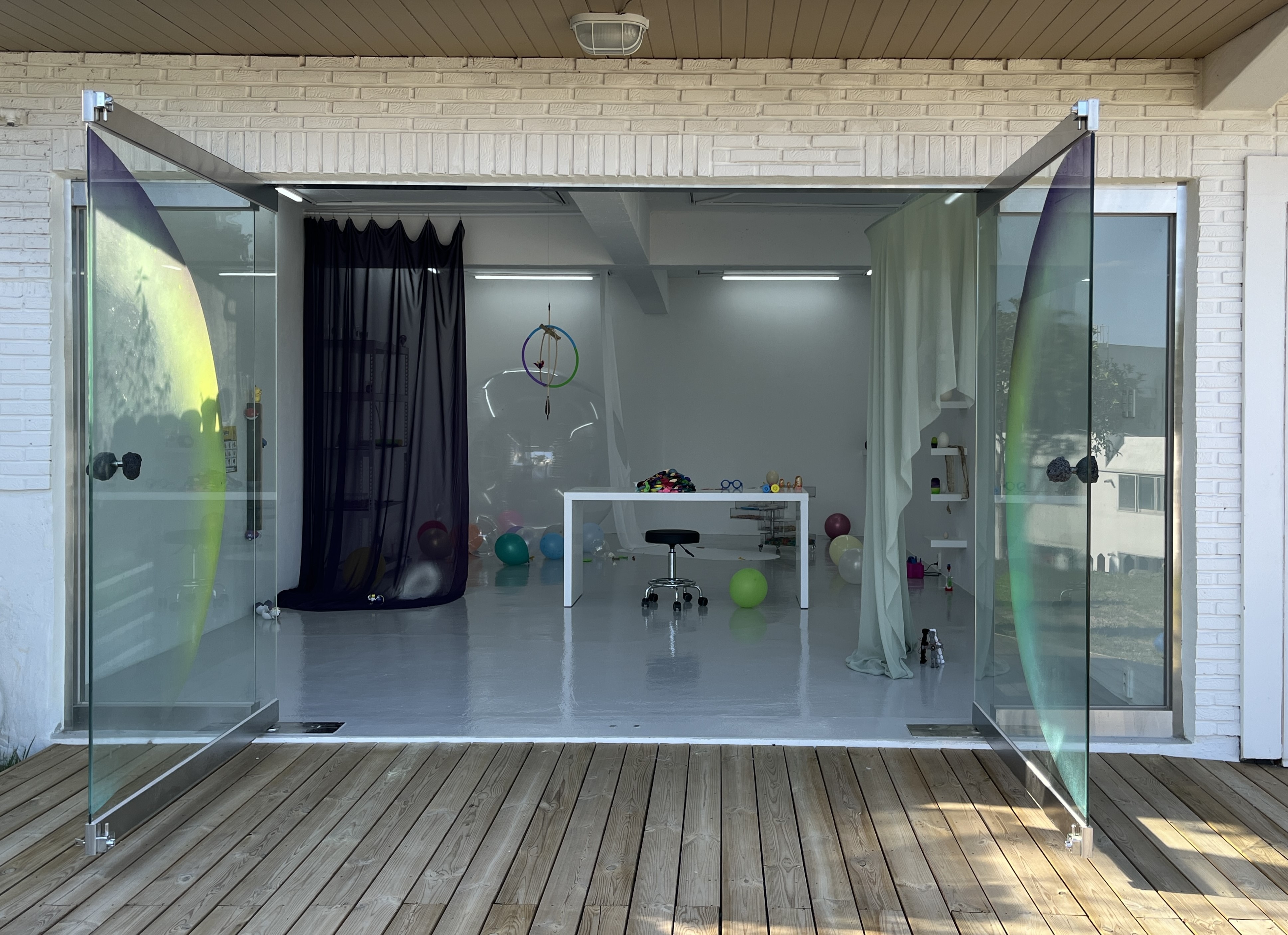
S/F: Upon entering the exhibition through the glassdoor with the image of a giant bubble gave me a feeling as if I had entered a playful child's laboratory. It seems like the exhibition consists of elements created by the artist and mass-produced items. What kind of relationship do the elements included in the exhibition have with each other?
When I plan an exhibition, I do not consciously consider the relationship between elements in the show. I believe that my accumulated experiences and perspectives will naturally guide their relationships. Here, experience is a state that conscious and unconscious are mixed up.
Toys are widely used in this exhibition; materials that grow when soaked in water and items like the monster balls and monsters from the cartoon Pokémon were utilized as I kept in mind the approach to 'self' and 'boundaries' explored in this exhibition. These ideas came to mind or were caught from daily life. Preparing the show, I tried AliExpress for the first time, and there are also toys that I bought happily because the AI guided me well towards what I wanted.
Regarding the part in the question about 'the relationship between them,' I find it difficult to clarify; they are a collection of choices based on my light feelings and reactions.

S/F: You work with video, painting, installation, and performance. How do you choose your medium? This exhibition felt like an installation that might include performances. I'm curious if there are performative elements in this exhibition.
YH:This is an obvious answer, but I decide the medium on the suitability to express my ideas. There are no specific rules or methodical approaches set. I tend to proceed spontaneously each time.
Balloons play a significant role in this exhibition. In planning, I wanted to use a motor to blow up the balloons, but it was difficult to actualize that plan. The plan changed so the audience directly blows the balloons. I'm curious about the audience's reactions; such as the choice of balloons, what tool to use to blow them, how much to inflate them, or whether they would even bother to touch them. The performances by the audience and changes created by them might be the variable performances of this exhibition.
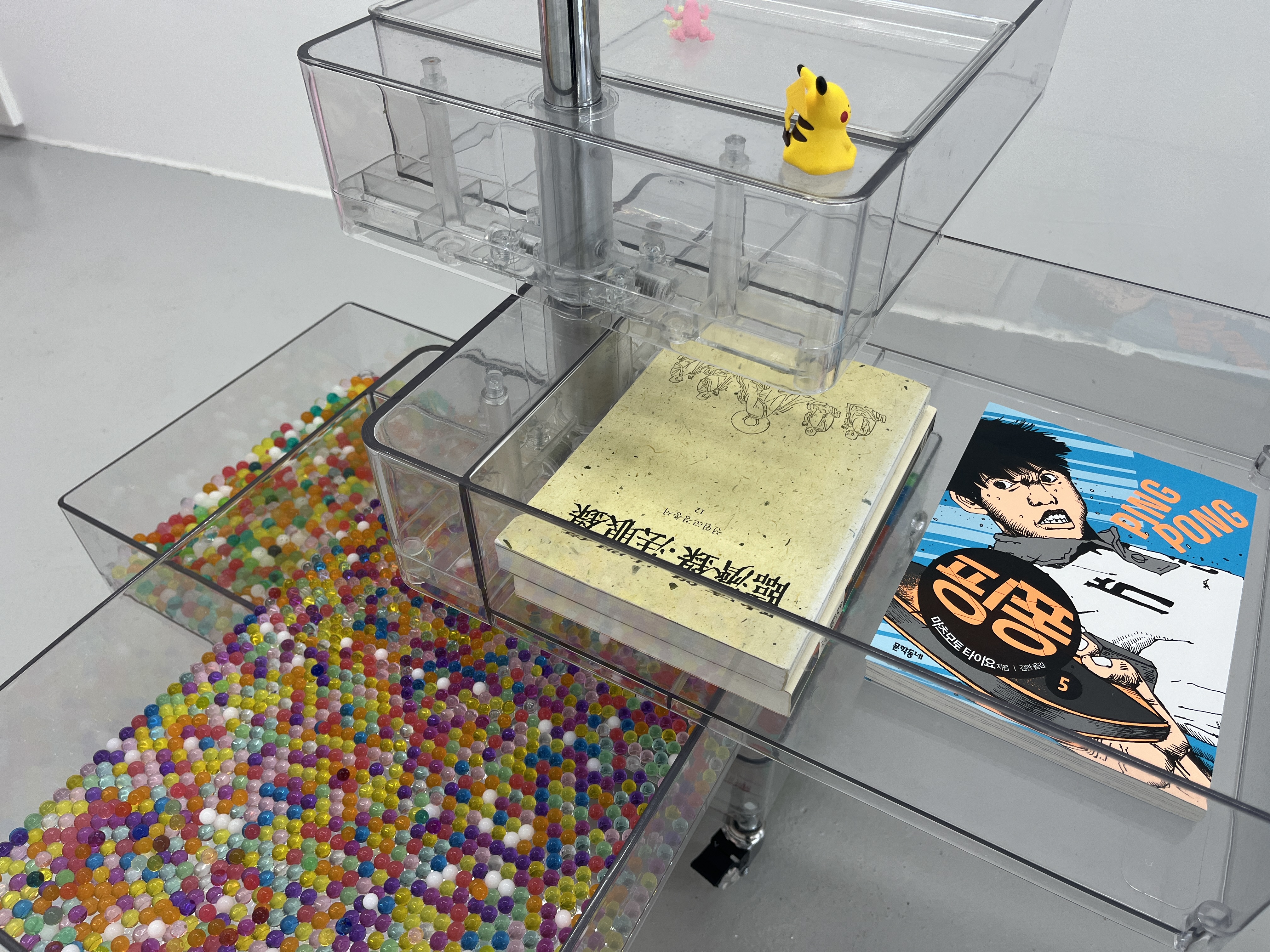
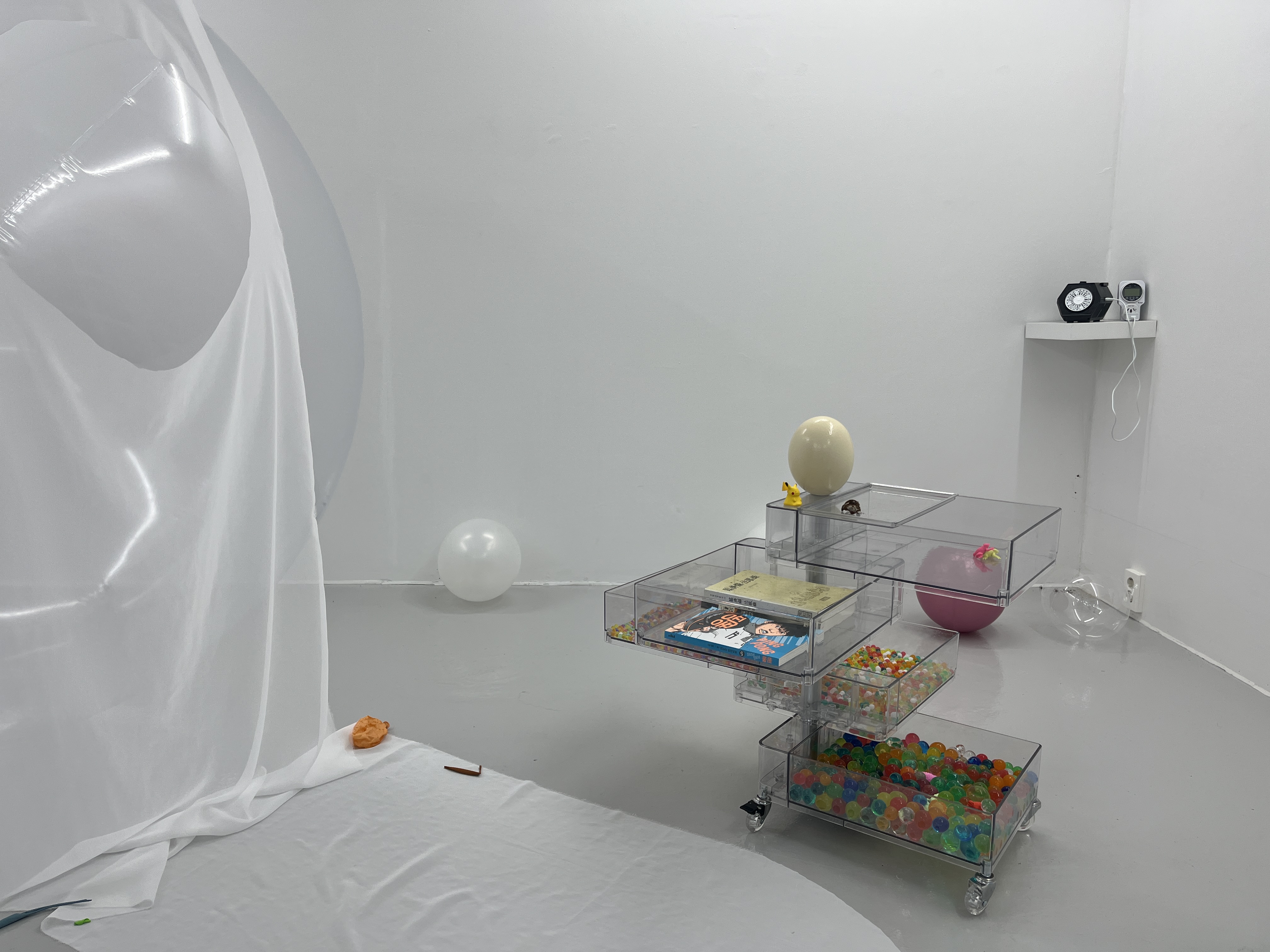
S/F: While viewing the exhibition, the exhibition title 'Bbung-iyo~' came to mind again. When an artist calls their art a lie, it might mean they want it to be perceived as a cheap, forgettable lie, like a mundane joke. I wonder what your thoughts are on this. What is the relationship between the audience and the artist, and how do you define art?
YH: This exhibition focuses not on criticism of art but on criticism and reflects on our lives and the expansion of one's nothingness. I am not interested in defining or fixing what art is.
I don't enjoy fixating on things, but I think art is simply expressing something that humans want to express. Rather than being confined by form or content, although saying this may lead to a somewhat irresponsible point where everything is considered art, it's not necessarily true. Just writing down what one experiences or comes to mind in life, making gestures, or drawing pictures might be considered as art. Because art is also like human mimesis (from Adorno's perspective) or editing ability.
My attitude is to emotionally engage with small things, focus unnecessarily on them, and develop them. However, in a situation where stories of the uncertainty and interdependence, such as the butterfly effect, fractals, quantum entanglement, and the fourfold, have been abundant in ancient Eastern philosophy and have been scientifically proven in modern times, such attitude seems to have its own value and justification. The story of Zhuangzi and the butterfly comes to mind as well.
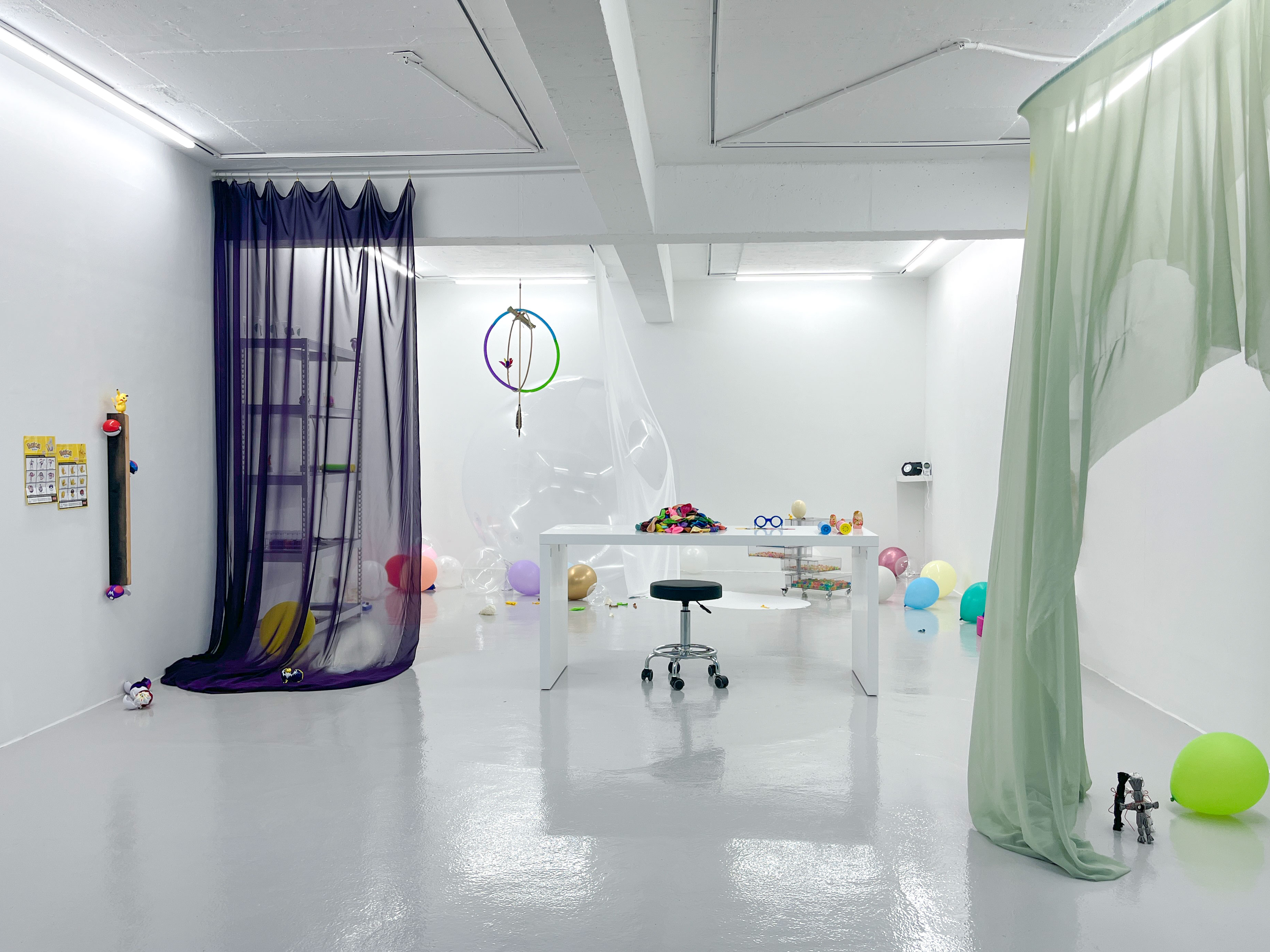
S/F: There's an expression, 'joke with bones' implying that amidst things we easily overlook or meaningless, there are things worth looking into, worth contemplating. I find myself drawn to works that present jokes way too seriously, or the attitude of throwing sincerity as if it is nothing. Sometimes, because of the serious attitude itself becomes the joke. What attitude do you have in this regard?
YH: When I reflect on myself, what I do feels like mere gibberish rather than jokes. Gibberish may have a negative or cynical connotation, but throwing out gibberish unconsciously feels sincere to me. It's like a mind map that extends beyond reason or calculation.
My attitude is to emotionally engage with small things, focus unnecessarily on them, and develop them. However, in a situation where stories of the uncertainty and interdependence, such as the butterfly effect, fractals, quantum entanglement, and the fourfold, have been abundant in ancient Eastern philosophy and have been scientifically proven in modern times, such attitude seems to have its own value and justification. The story of Zhuangzi and the butterfly comes to mind as well.

SF: Finally, is there anything you would like to share with the readers of this interview?
YH: Although I mainly work in the field of art, what's more important than that is being interested in our entire lives. As I enjoy Eastern philosophy but also value global integrative thinking and the detachment, I prepared this exhibition with such a mindset. I hope all of us can take a break. Then, with the space that opens up, we can achieve relationships without boundaries and, ultimately, a greater true self.
Let's reduce our thoughts and 'bluff' ourselves. Let’s punch!